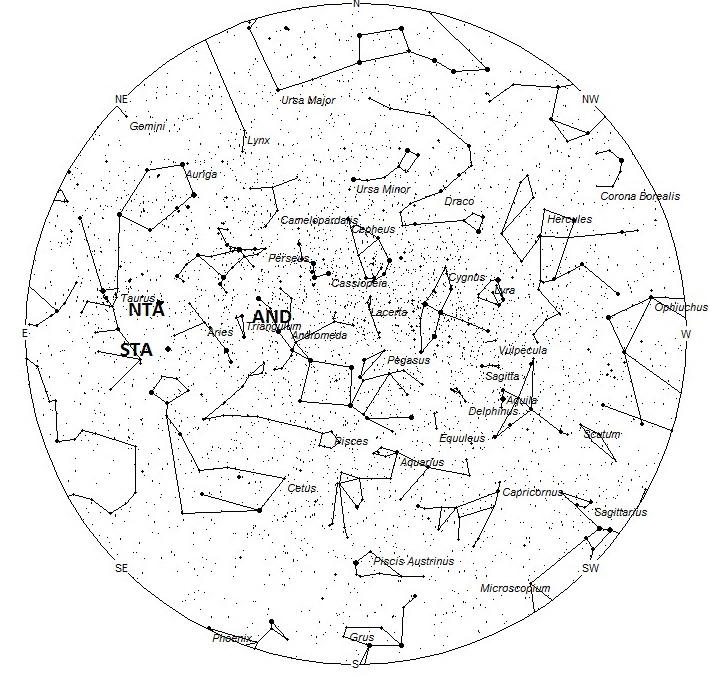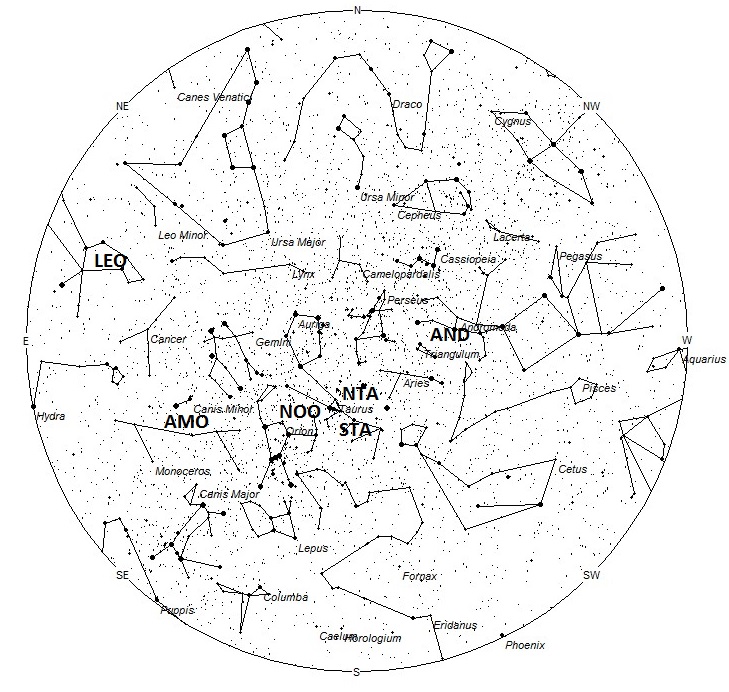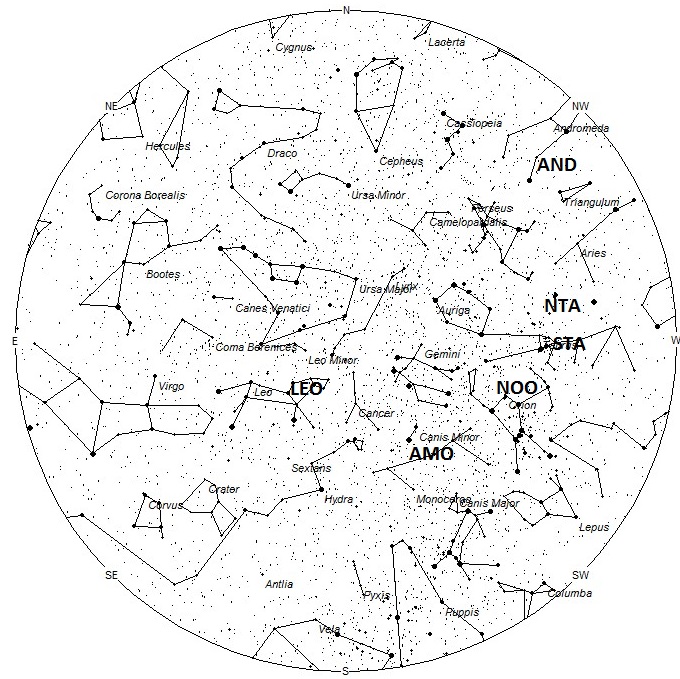During this period the moon reaches its full phase on Sunday November 17th. At this time the moon will lie opposite the sun and will lie above the horizon all night long as seen from mid-northern latitudes. As the week progresses, the waning gibbous moon will rise later each night, opening a window of dark skies in the hours immediately following dusk. Unfortunately the more active morning hours will still have severe lunar interference which will reduce the activity seen. The estimated total hourly meteor rates for evening observers this week is near 2 for observers located in the northern hemisphere and 1 for those viewing south of the equator. For morning observers the estimated total hourly rates should be near 12 as seen from mid-northern latitudes and near 9 for observers viewing from tropical southern latitudes. Rates are lower than normal due to interfering moonlight. The actual rates will also depend on factors such as personal light and motion perception, local weather conditions, alertness and experience in watching meteor activity. Note that the hourly rates listed below are estimates as viewed from dark sky sites away from urban light sources. Observers viewing from urban areas will see less activity as only the brightest meteors will be visible from such locations.
The radiant (the area of the sky where meteors appear to shoot from) positions and rates listed below are exact for Saturday night/Sunday morning November 16/17, except where noted in the summaries. These positions do not change greatly day to day so the listed coordinates may be used during this entire period. Most star atlases (available at science stores and planetariums) will provide maps with grid lines of the celestial coordinates so that you may find out exactly where these positions are located in the sky. A planisphere or computer planetarium program is also useful in showing the sky at any time of night on any date of the year. Activity from each radiant is best seen when it is positioned highest in the sky, either due north or south along the meridian, depending on your latitude. It must be remembered that meteor activity is rarely seen at the radiant position. Rather they shoot outwards from the radiant so it is best to center your field of view so that the radiant lies at the edge and not the center. Viewing there will allow you to easily trace the path of each meteor back to the radiant (if it is a shower member) or in another direction if it is a sporadic. Meteor activity is not seen from radiants that are located below the horizon. The positions below are listed in a west to east manner in order of right ascension (celestial longitude). The positions listed first are located further west therefore are accessible earlier in the night while those listed further down the list rise later in the night.
The table below presents a list of radiants that are expected to be active this week. Rates and positions are exact for Saturday night/Sunday morning. Details of each shower will return in our next outlook when moonlight will not be so severe.
| SHOWER | DATE OF MAXIMUM ACTIVITY | CELESTIAL POSITION | ENTRY VELOCITY | CULMINATION | HOURLY RATE | CLASS |
| RA (RA in Deg.) DEC | Km/Sec | Local Standard Time | North-South | |||
| Andromedids (AND) | Nov 08 | 01:40 (025) +35 | 19 | 23:00 | <1 – <1 | III |
| Northern Taurids (NTA) | Nov 11 | 04:12 (063) +23 | 29 | 01:00 | 2 – 1 | II |
| Southern Taurids (STA) | Oct 10 | 03:56 (065) +16 | 29 | 01:00 | 1 – 1 | II |
| Nov. Orionids (NOO) | Nov 29 | 05:28 (082) +16 | 44 | 02:00 | 1 – <1 | II |
| Alpha Monocerotids (AMO) | Nov 21 | 07:32 (113) +01 | 65 | 04:00 | <1 – <1 | III |
| Leonids (LEO) | Nov 18 | 10:16 (154) +22 | 71 | 07:00 | 2 – 1 | I |
 American Meteor Society
American Meteor Society



Saw a fireball, November 16, 2013, 9:45, over the Liberal, KS area.
I saw a big bright fireball over Dana Point tonight on my run around 9:30 or so. It moves slow, seemed very close and was so bright and beautiful with a long trail. It seemed to come from the South moving North, but I could be way off on that. I’m certain it was beautiful tho and I feel so lucky to have seen it while out running.
On November 16th 2013 around 5:35 pm, I saw a bright flash of light in the sky. It was very bright and illuminated the whole sky. I was driving at the time. It was very much like a bright flash of lightning over the mountains, only with no lightning bolt and it was the middle of winter. Winter lightning is extremely rare and there were no clouds that evening. I actually put it out of my mind because nobody else reported seeing it, until I was at work several weeks later and another person was asking around, and said they saw the same thing at 5:35pm on that day. I can’t find anyone else in the area who saw anything.